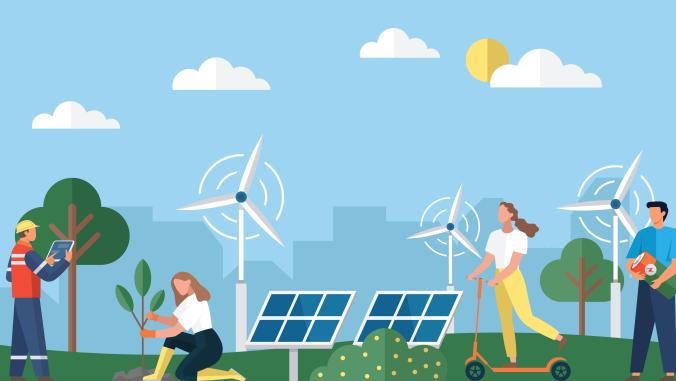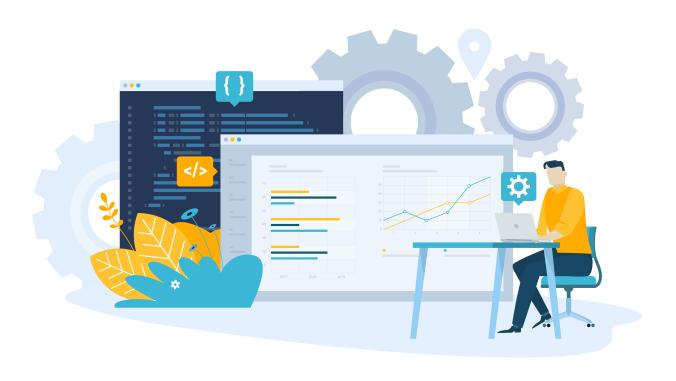Getting Ready for the New, Disruptive Energy Utility
<p>SAP's recent conference on the evolution of the utility industry highlighted the unique challenges that energy companies face in the transition to a smart, hyperconnected electrical grid.</p>

Recently, SAP's user group hosted a conference entitled "Sustainability for the New Energy Era," for the software company's utilities customers. Much like SAP's annual Sapphire event (you can read my take on last year's gathering here), it brings together technical people who want to talk about implementing the software for their business.
For most IT departments, implementing a large system like SAP goes hand-in-hand with changing business processes and streamlining how your business operates. In fact, when enterprise resource planning (ERP) was the New New Thing in the late 1980s and early 1990s, it seemed as if every company undertook business process re-engineering.
In many of the industries where SAP delivers solutions, the best practices are now fairly well-defined. Companies understand how the software will help them run their business. But things aren't as simple for energy utilities. According to Al Fohrer, chairman and CEO of Southern California Edison, there will be "as much change in the next 10 years as they've seen in the previous 120."
As I talked with a number of utility executives and industry advisors, what emerged is that no one seems to really know what that change is going to be, but they all believe it will happen. That's creating an excitement in the industry that probably hasn't existed since, well, Thomas Edison. Think about how the telecommunications industry or television has changed in the last 20 years -- both technology and biz models -- and then multiply that by 10 and you'll begin to understand the potential scale of change for utilities.
The Gap That's Driving Transformation
Prognosticating is a tricky business. As smart as Edison was, he predicted the primary form of electricity generation would be solar. Southern California Edison's Fohrer succinctly described the historical perspective of the utility industry as follows: "Electricity flowed in one direction, we read a meter once a month and sent you a bill." That, he contends, will no longer be a relevant description in the future. But what is behind this anticipation of change?
Many of the conference sessions highlighted the intersection of consumer behavior and the smart grid. Fohrer's humorous overview was that "No one knows what the smart grid is but everyone is willing to talk about it." And talk they did! Panelists discussed how time-of-use pricing (the idea that a higher price can be charged when demand for electricity is greatest) will be used to change consumer behavior. Others supplied the counter argument that the highly regulated nature of the industry limits rate change and views energy as a right, not a luxury.
Why was everyone talking about trying to change consumer behavior? Because, as Craig Smith, assistant general manager of the Snohomish public utility, pointed out, "We have a gap between demand and generation and we have to meet it with energy efficiency."
Supply, Demand, and Smarter Grids
The gap between increasing demand and constrained supply can be attributed to a number of factors, not the least of which is that fewer power plants are being permitted (much less built) and state and local governments are demanding an increased reliance on renewable energy sources.
There are also possible accelerators of demand, such as the introduction of electric cars in markets like California. As several speakers noted, each electric car plugged into the utility grid is equivalent to adding a new house. This is an important factor in our energy future as the purchase of these vehicles is expected to be in geographic clusters and not evenly spread across the grid creating an uneven increase in demand for electricity.
Today, most utilities don't even know when there's a power outage unless you call to report it. Imagine adding dozens or hundreds of houses to a community's power grid overnight in the coming months, when the Nissan Leaf or Chevy Volt goes on the market.
This is one of the big reasons why the utility executives are so excited about automated metering and the smart grid. With more real-time information about energy consumption and demand, they can be more proactive in managing the grid. This will not just help in meeting demand but also increasing supply, as more customers install solar panels and fuel cells in their homes and businesses and feed energy into the grid.
Co-creating the New Utility
In order to be smart, you need not just information, but intelligence. It was clear from the conference that smarter meters and a smarter utility grid will create an exponential increase in the data available to utilities as well as commercial and residential customers. With a growth in data come new opportunities for optimization and automation, from balancing the grid to remotely managing home energy use via an iPhone or other gizmo. But going from zero to 60 without a map could make for a difficult journey.
With a strategy for customer outreach (for an example, see "Utility Lights Up Partnership with Consumers") and an openness to work across the industry, the key word for success will be "co-creation." In conversations with both senior SAP and utility executives, I learned that they clearly understand that fulfilling the potential will require partnerships.
There were a number of early examples discussed as to how these partnerships may evolve, but it's clear that there isn't going to be one big winner but a portfolio of winners. As renewables come online in greater capacity, and utilities begin managing more proactively with deeper data analysis, the industry will be required to manage two rates of change: They will need to manage assets (solar installations, gas-fired plants, solar installations, and more) that have a lifecycle of at least 10 years and typically much longer. And they will have to do this alongside much more rapidly evolving technology-based solutions.
As Warren Weiss, General Partner at Foundation Capital summed it up: "It's going to be very cool to work in the energy business."
John Davies is Vice President of GreenBiz Intelligence.
Photo CC-licensed by emples.





